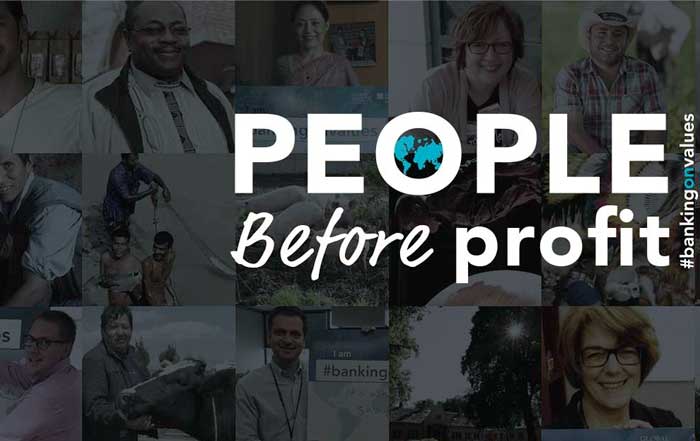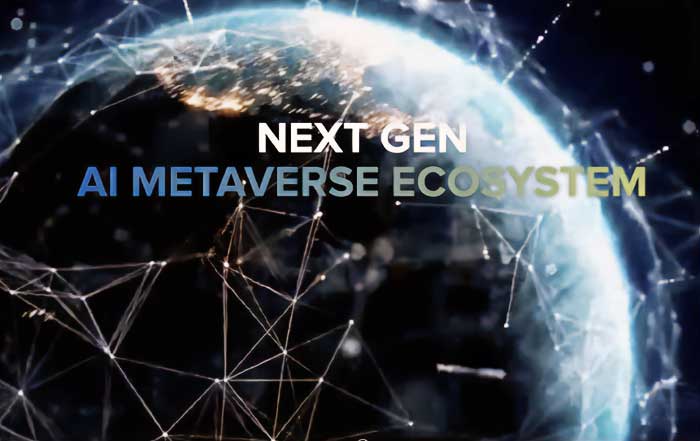Sustainable banking, a steadily evolving practice that intertwines environmental, social, and governance (ESG) considerations into the core of financial services, is reshaping the global financial landscape in profound ways. By channeling capital toward projects and enterprises that advance environmental stewardship and social well-being, this approach marks a significant departure from the traditional focus on short-term gains and profitability metrics alone. In December 2024, as international attention intensifies around the urgency of climate change, biodiversity loss, resource depletion, and widening socio-economic disparities, sustainable banking has emerged as a catalyst for reimagining the role of financial institutions. The emphasis now falls on building institutions that integrate stakeholder interests, support regenerative economic activities, and ensure that the pursuit of growth does not erode the very foundations upon which future prosperity rests.
While the financial sector has historically concentrated on delivering returns to shareholders, sustainable banking redefines notions of responsibility by aligning the objectives of financial intermediaries with those of broader society. This inclusive perspective recognizes that long-term corporate viability is closely tied to environmental health, social cohesion, and robust governance frameworks. In effect, sustainable banking encourages the flow of capital into ventures that serve as cornerstones for a more stable and equitable economy. These may range from large-scale renewable energy developments that reduce carbon footprints and strengthen energy security, to impactful agriculture initiatives that ensure resilient food systems and protect vital ecosystems. Over time, such an approach does more than mitigate harm; it fosters conditions where prosperity and integrity coexist, benefiting current and future generations.
The transformation from conventional banking practices to sustainable models has not occurred in a vacuum. Regulatory shifts, investor demand, technological advancement, and evolving market opportunities now shape a new era of finance. Green bonds, ESG-linked loans, and sustainability-linked derivatives form part of a growing toolkit that enables financial institutions to tailor products that incentivize responsible behavior, reduce environmental risks, and support the scaling up of green projects. As these instruments mature, they illustrate how responsible lending and investment strategies can embrace complexity, manage risk, and unlock new avenues of economic growth.
Nonetheless, the path toward an integrated sustainable banking ecosystem is not without its challenges. Limited internal expertise on ESG metrics, inconsistent sustainability standards, initially high capital costs for green infrastructure, and perceived market uncertainties hamper progress. Yet, as pioneering institutions demonstrate success and as international frameworks bring alignment, it becomes ever clearer that these barriers are surmountable. Increasingly, leading banks show that profitability and purpose can reinforce one another. Through capacity building, adoption of best practices, and forward-thinking leadership, these obstacles can transform into opportunities for innovation and differentiation.
The future of sustainable banking promises a dynamic interplay between regulation, investor expectations, and stakeholder engagement. Technology, notably digital platforms, blockchain, and advanced analytics, will enable unprecedented transparency and precision in measuring ESG outcomes. Collaboration between private, public, and non-profit actors will strengthen financial institutions’ ability to fund impactful projects at scale. Over time, success in this sphere will be measured not only by financial returns, but also by contributions to societal resilience, resource regeneration, and inclusive development. By the end of this decade, sustainable banking may no longer be an emergent practice but a foundational principle baked into the very architecture of global finance.
Those seeking a deeper understanding of sustainable banking’s purpose, its evolving frameworks, and its practical applications can look to key initiatives and guiding principles set forth by leading financial coalitions. Exploring Principles for Responsible Banking provides a roadmap for aligning banking practices with global sustainability goals, while reviewing Green Bonds by ICMA sheds light on structuring credible green finance instruments. Learning from the Global Alliance for Banking on Values reveals the transformative impact that values-based financial institutions can deliver. Taken together, these resources point toward an era in which sustainable banking is not a peripheral initiative but a central pillar of a more responsible financial future.
Understanding the Essence of Sustainable Banking
Sustainable banking infuses traditional financial intermediation—mobilizing capital from savers to borrowers—with principles that acknowledge a wider set of responsibilities. Rather than simply optimizing returns, it embeds considerations of environmental integrity, social justice, and transparent governance into every transaction. This holistic perspective challenges outdated assumptions that environmental and social objectives exist at odds with financial prosperity. Instead, it reframes success, positing that long-term stability and profitability are inextricably linked to the overall health of the ecological and social systems on which all markets depend.
Over the years, the concept of sustainability in banking has matured from philanthropic initiatives or niche investment products into a strategic imperative. It demands robust integration of ESG risk assessments into credit analysis and underwriting decisions, deeper engagement with communities and regulators, and proactive support for the low-carbon transition. As a framework, sustainable banking recognizes that externalities—be they carbon emissions, labor abuses, or ecosystem degradation—are no longer invisible footnotes but must be factored into the cost of capital. In doing so, this approach encourages banks to act not only as financiers, but as stewards of a well-functioning and regenerative global economic system.
Defining Green Projects and Their Role in Economic Progress
Green projects form the backbone of sustainable banking. They encompass a wide range of ventures aimed at tackling climate change, safeguarding biodiversity, enhancing energy efficiency, and fostering inclusive growth. Examples include renewable energy installations that displace carbon-intensive fossil fuels; sustainable agriculture operations that preserve soil health and biodiversity; energy-efficient infrastructures that minimize resource consumption; and large-scale habitat restoration projects that protect and restore vital ecosystems.
The economic significance of green projects is profound. Such initiatives reduce dependence on non-renewable resources, enhance energy security, and stabilize long-term input costs. Renewable energy developments, for example, nurture domestic industries around wind turbine manufacturing, solar panel production, and advanced energy storage. Sustainable agriculture supports rural livelihoods, enriches soil fertility, and diminishes vulnerability to resource depletion. Restored wetlands and forests purify water, modulate weather patterns, and provide habitats for species that support entire food chains, safeguarding the ecological bedrock of economies.
Access to specialized financing mechanisms, from green bonds to ESG-linked loans, is pivotal in unlocking these projects’ potential. Banks bridge the gap between capital providers and developers, designing financial instruments that encourage better resource management, emissions reductions, and inclusive business models. By linking financial returns to sustainability outcomes, these instruments create virtuous cycles where market efficiency, environmental stewardship, and social progress reinforce one another. Over time, such arrangements attract additional investment, nurture innovation, and foster environments where responsible growth flourishes.
The Evolution of Sustainable Banking Practices
The trajectory of sustainable banking can be traced from early pioneers that boldly integrated ethical principles into lending decisions, to the present generation of mainstream financial institutions embracing comprehensive ESG frameworks. Initially, socially responsible and green financing seemed niche or idealistic, pursued by a handful of mission-driven banks. Over time, global awareness of environmental crises and inequality spurred regulations, multilateral agreements, and voluntary standards that legitimized and guided sustainable finance.
The Principles for Responsible Banking offer an overarching framework for aligning strategies with societal goals, while the Equator Principles guide the assessment and management of environmental and social risks in project finance. This interplay between voluntary commitments and regulatory signals helped convert isolated best practices into a broader industry movement. Large banks began issuing green bonds, channeling substantial capital into renewable energy, low-carbon transport, and energy-efficient buildings. ESG-linked loans incentivized corporate borrowers to adopt sustainable supply chain practices, reduce emissions, or improve community relations.
Technological innovations played a role as well. Advanced analytics, artificial intelligence, and blockchain tools improve transparency and precision in ESG assessments, enabling banks to spot emerging risks, measure project impacts, and verify claims. These technologies make it easier to identify opportunities for financing new infrastructure—such as energy microgrids, electric vehicle charging networks, or regenerative agriculture cooperatives—that hold the promise of resilient long-term returns.
As the sustainable finance ecosystem matures, it becomes clearer that sustainability considerations must permeate every layer of banking. Credit officers incorporate ESG factors into their scoring models, wealth managers design impact-oriented portfolios for clients, and executive boards champion strategies that align profit with purpose. This evolution is far from over. As environmental challenges intensify and societal expectations grow, sustainable banking will continue to adapt, innovate, and deepen its roots.
Driving Forces Behind the Growth of Sustainable Banking
Regulatory Momentum and Policy Frameworks
Government policies, regulatory guidance, and international frameworks have significantly accelerated the adoption of sustainable banking. By mandating climate-related disclosures, supporting green taxonomies, and providing incentives for low-carbon investments, policymakers lower barriers that once hindered sustainable finance. Financial supervisors encourage climate stress testing, ensuring that banks manage the systemic risks arising from environmental degradation.
These measures reinforce market confidence by standardizing practices and improving transparency. When all financial institutions operate under clear, consistent rules, it becomes easier to compare projects, price ESG risks accurately, and direct capital to the most impactful opportunities. In addition, policy frameworks that align financing flows with sustainability goals help institutionalize ESG considerations, moving them from the periphery into the core of financial decision-making.
Investor Demand and Market Signals
Institutional investors have embraced ESG metrics as critical indicators of corporate resilience. Pension funds, asset managers, and university endowments increasingly recognize that climate change, resource scarcity, and social unrest threaten their long-term returns. They seek out investments that mitigate these risks, deliver steady growth, and serve genuine social purposes.
As investor interest in sustainable finance expands, banks align their product offerings to meet these expectations. This alignment fuels a feedback loop: more credible green projects and ESG-linked deals emerge, attracting more capital and building momentum. Ultimately, the shift in investor sentiment pushes banks to innovate, refine their ESG methodologies, and produce measurable outcomes that appeal to capital providers who have come to view sustainability as integral, not optional.
Technological Advancements and Data Analytics
Advanced data analytics bolster sustainable banking by providing unparalleled insights into ESG factors. Machine learning models can track supply chain emissions, satellite imagery can verify forest cover restoration, and blockchain can ensure traceability of green bond proceeds. These technological tools reduce due diligence costs, enforce accountability, and deter greenwashing.
For instance, real-time monitoring of a solar farm’s energy output or a reforestation project’s carbon uptake fosters investor trust in reported results. When banks can verify outcomes, they are better equipped to structure deals that reward verifiable ESG improvements with lower borrowing costs. Over time, continuous data streams and predictive analytics create dynamic feedback loops, allowing banks to refine models, improve forecasts, and craft more effective sustainability-linked products.
Market Opportunities in a Low-Carbon Economy
The environmental crisis, while daunting, also presents a massive economic opportunity. Transitioning to a low-carbon economy requires investments on an unprecedented scale. Renewable energy systems, energy storage facilities, electric vehicle fleets, climate-resilient infrastructure, and circular waste management frameworks offer viable and growing markets. Developing countries can leapfrog outdated technologies, while established economies can revitalize manufacturing sectors around green industries.
Banks that recognize and embrace these market opportunities can differentiate themselves. They build portfolios with a balanced mix of established projects and high-potential frontier investments. By doing so, they position themselves as partners to governments, corporations, and innovators charting paths to sustainability. Over time, as the green economy flourishes, early movers secure customer loyalty, deepen partnerships, and enjoy stable revenue streams tied to long-term economic trends.
Reputation Management and Risk Mitigation
Maintaining a robust ESG profile enhances a bank’s reputation. Institutions that treat sustainability as non-negotiable earn public trust, strengthen customer relationships, and attract top talent. In an era of heightened scrutiny, transparent ESG performance wards off reputational damage that can arise from financing harmful activities.
Moreover, by incorporating ESG factors into risk models, banks mitigate exposure to environmental liabilities, stranded assets, and regulatory penalties. They improve portfolio resilience and reduce volatility. This forward-looking approach shields them from abrupt policy shifts, resource price shocks, or climate-related disasters. In essence, embracing sustainability can be viewed as an insurance policy—one that safeguards financial returns against unpredictable ecological and social disruption.
Financial Instruments That Propel Green Projects
Green Bonds
Green bonds channel capital toward projects with explicit environmental benefits. Whether funding solar panels on school rooftops, large-scale offshore wind farms, or wildlife corridors to boost biodiversity, these debt instruments come with clear standards and reporting requirements. The transparency inherent in green bonds builds investor confidence and enables banks to raise substantial funding pools dedicated to ecological solutions.
As green bonds gain traction, they lower the cost of capital for green projects. Over time, this mechanism reduces financial friction, allowing large infrastructural shifts—such as nationwide smart grid upgrades—to become economically feasible. Banks that master the issuance and management of green bonds position themselves as key facilitators in the transition to a cleaner economy.
ESG-Linked Loans
ESG-linked loans reward borrowers for meeting specific sustainability targets with more favorable interest rates or terms. A manufacturing company that reduces water usage or a logistics firm that slashes transportation emissions can benefit from lower borrowing costs once they prove their performance improvements.
These loans transform ESG considerations into concrete financial metrics. They also encourage transparency and continuous improvement, as borrowers must report on their progress. Over time, ESG-linked loans push entire sectors to adopt sustainable operations. They build an ecosystem where doing the right thing for the environment and society aligns with favorable financing conditions, accelerating progress toward sustainability.
Sustainability-Linked Derivatives
Sustainability-linked derivatives extend the concept of ESG integration into risk management tools. For instance, a company can hedge interest rate fluctuations while tying a portion of its hedge costs to emissions reductions. If the company outperforms its sustainability targets, it pays less. If it lags, it pays more.
Such derivatives embed ESG factors into everyday financial operations. They encourage companies to internalize sustainability goals, ensuring these objectives are not peripheral but integrated into their strategic planning. By offering sustainability-linked derivatives, banks help clients align their broader risk management strategies with ESG priorities, fostering a holistic approach to business stability.
Carbon Offset Financing
Carbon offset financing directs investment into projects that capture or reduce greenhouse gases. This may mean supporting reforestation in degraded landscapes, investing in carbon capture technologies, or enhancing soil carbon sequestration in agricultural lands. In exchange, companies and individuals receive offset credits that balance their emissions.
Banks facilitate this process by identifying credible offset projects, verifying their impact, and ensuring that credits represent real, additional, and permanent carbon savings. Carbon offset financing helps build markets that value emissions reductions as a tradeable asset. Over time, this shifts incentives, raising the cost of pollution and rewarding innovations that mitigate climate change.
Impact Investing Funds
Impact investing funds go beyond risk-adjusted returns. They actively seek measurable positive impacts on society and the environment. These funds invest in ventures tackling issues such as clean water access, affordable housing, or sustainable fisheries. By bundling capital from mission-aligned investors, banks can deploy resources into initiatives that generate both financial and societal returns.
Such funds attract a new breed of investors who view money as a tool for positive change. As funds mature, robust metrics and transparent reporting ensure that both the intended impact and financial performance are met. Over time, impact investing strengthens the connection between market forces and human aspirations, enabling finance to become a genuine driver of sustainable development.
Overcoming Challenges to Scale Sustainable Banking
Building Internal Expertise and Capacity
A key obstacle to sustainable banking lies in the shortage of ESG expertise within financial institutions. Evaluating the viability of a large-scale solar installation requires not only financial modeling but also knowledge of solar insolation, maintenance needs, local permitting regimes, and long-term equipment reliability. Similarly, assessing the impact of a community investment initiative means understanding cultural contexts, social dynamics, and beneficiary feedback loops.
Banks must invest in training, hire sustainability specialists, and collaborate with NGOs, think tanks, and academic institutions. By nurturing internal capability, they improve the quality of ESG assessments and lending decisions. This expertise enables them to navigate evolving standards, identify early-stage opportunities, and manage nuanced risks, ultimately leading to more robust and confidence-inspiring sustainable portfolios.
Harmonizing ESG Standards and Metrics
Fragmented ESG standards complicate comparisons across projects and industries. Divergent rating methodologies, subjective scoring, and inconsistent reporting make it difficult for banks to accurately assess sustainability performance. Harmonized frameworks and aligned taxonomies can streamline these processes.
Regulators, industry groups, and multi-stakeholder initiatives work to converge on common definitions of “green” and “social” investments. When uniform standards exist, banks can confidently scale up ESG lending. Borrowers benefit from clear expectations, while investors gain trust in the veracity of disclosed metrics. Over time, standardization reduces transaction costs, eliminates confusion, and accelerates sustainable finance’s growth trajectory.
Addressing High Upfront Costs
Many green projects demand significant initial investments. Building an offshore wind farm or upgrading an entire city’s infrastructure for energy efficiency requires substantial capital before returns materialize. High upfront costs deter risk-averse investors and slow the pace of change.
Blended finance solutions, public-private partnerships, and concessional funding can mitigate these challenges. Development banks can provide guarantees or first-loss tranches, philanthropic capital can de-risk pioneering solutions, and governments can offer tax incentives. By distributing risk more equitably among stakeholders, these arrangements make large-scale green projects bankable, ensuring that ambitious undertakings move from concept to implementation.
Calibrating Risk Perception
Green projects can carry perceived risks due to emerging technologies, policy uncertainties, or limited track records. Banks must develop robust risk assessment frameworks that account for these factors. Scenario analyses, climate stress tests, and third-party validation help demonstrate project resilience.
Clear communication and transparency with investors alleviate concerns. When banks share detailed information on how they price ESG risks, manage covenant terms, or ensure compliance with best practices, they build trust. Over time, as more green projects prove their profitability and reliability, market perceptions will shift, enabling greater capital inflows into sustainable ventures.
Balancing Financial Performance with Purpose
Embracing sustainability does not mean compromising profitability. Banks must select projects carefully, ensuring that sustainability initiatives align with sound commercial judgment. Integrating ESG considerations into existing risk models, business strategies, and investment committees ensures that sustainability is treated as a material factor, not an afterthought.
This alignment transforms ESG integration into a strategic advantage. By moving early in growth markets like renewable energy or zero-waste infrastructure, banks gain competitive edges. They attract clients who value forward-thinking financial partners and secure stable long-term returns. Balancing purpose and profit allows sustainable banking to become a sustainable business model in its own right.
Case Studies: Institutions Leading by Example
Triodos Bank: A Pioneer in Values-Based Banking
Triodos Bank, founded in the Netherlands, exemplifies values-based banking. From its inception, it committed to funding projects that benefit people and the planet, investing in renewable energy, organic agriculture, and social entrepreneurship. By maintaining transparency and letting depositors know where their money goes, Triodos fostered trust, loyalty, and a strong brand identity.
Its enduring profitability and steady growth challenge assumptions that values-driven strategies lag in performance. Instead, Triodos’s example shows that aligning capital flows with positive impact can deliver robust financial returns. Over time, Triodos influenced other institutions to adopt its ethos, proving that integrating ESG principles is not just a moral choice but a profitable one.
HSBC’s Green Bonds for Global Renewable Energy
HSBC’s issuance of green bonds underscores how large financial players can accelerate change. Its green bonds finance renewable energy installations across continents, from solar farms in emerging markets to offshore wind projects in established economies. By adhering to clear standards, rigorous reporting, and verified impact metrics, HSBC attracts investors who demand both financial returns and tangible environmental benefits.
These green bonds exemplify how a major institution can deploy capital at scale to catalyze the low-carbon economy. They provide liquidity for developers, reduce financing costs, and normalize the idea that clean energy investments are as financially sound as fossil fuel ventures. Over time, HSBC’s leadership prompts others to enter the green bond market, expanding the capital pool for sustainability solutions.
DBS Bank’s Integrated Sustainable Finance Strategy
DBS Bank’s approach integrates sustainability throughout its operations. It does not isolate ESG considerations in a single department; instead, it weaves them into credit analysis, product development, and strategic planning. DBS supports a wide range of green projects, from energy-efficient buildings in Southeast Asia’s megacities to biodiversity restoration initiatives in vulnerable ecosystems.
This holistic approach enables DBS to manage ESG risks more effectively, identify early-stage opportunities, and build a reputation for responsible finance. By continuously refining its frameworks and collaborating with stakeholders, DBS demonstrates that sustainability need not be an add-on feature. Rather, it can function as the connective tissue that aligns a bank’s lending practices with broader societal aspirations.
Envisioning the Future of Sustainable Banking
The future of sustainable banking will be shaped by technology, collaboration, transparency, and the relentless pursuit of effective ESG integration. Several trends are likely to emerge:
Deeper Technological Integration:AI-driven analytics and blockchain verification will streamline ESG data management. Automated scoring systems and granular impact reporting will enable faster decision-making, lower transaction costs, and stronger investor confidence.
Expanded Product Diversity:Beyond green bonds and ESG-linked loans, expect a proliferation of niche instruments targeting challenges like ocean plastics, regenerative agriculture, or climate adaptation infrastructure. Tailored solutions will serve different sectors, regions, and market segments.
Global Collaboration and Standardization:International coalitions of regulators, central banks, and industry bodies will push for more consistent ESG taxonomies. Harmonized definitions of “green,” “social,” and “sustainable” investments will facilitate cross-border flows of capital, promoting global ESG integration.
Public-Private Synergies:Partnerships between banks, governments, and philanthropic organizations will expand. These alliances can unlock funding for ambitious projects—like expanding renewable energy grids in remote areas or restoring degraded ecosystems—that might otherwise struggle to attract private capital.
Enhanced Accountability and Stakeholder Engagement:Consumers, activists, and civil society organizations will demand greater accountability. Banks that communicate openly about their portfolios, ESG targets, and impact outcomes will build trust. Feedback loops with stakeholders ensure continuous improvement and discourage greenwashing.
Integration into Core Business Strategies:Over time, sustainability will move from being a differentiating factor to a foundational expectation. Financial institutions that embed ESG considerations at every level will not only meet regulatory and investor requirements but also gain long-term competitive advantages.
Conclusion
Sustainable banking embodies a transformative vision, one in which finance serves as a cornerstone of a stable, inclusive, and regenerative economy. By directing capital toward green projects, integrating ESG considerations into credit and investment decisions, and developing innovative financial instruments, banks align their operations with the well-being of societies and ecosystems.
The journey has not been without hurdles. Limited internal expertise, inconsistent ESG standards, and initial cost barriers have tested the sector’s commitment. Yet, as success stories proliferate—from Triodos Bank’s values-based model to HSBC’s global green bonds and DBS’s integrated approach—it becomes evident that the alignment of profit with purpose is both attainable and advantageous.
Looking ahead, sustainable banking will further mature as regulators standardize frameworks, investors deepen their ESG commitments, and technological tools enhance transparency. Its principles will spread beyond early adopters, becoming embedded in the financial sector’s DNA. As the world navigates pressing environmental and social challenges, sustainable banking will remain a critical enabler of positive change, channeling capital toward transformative solutions that ensure a stable climate, a thriving biosphere, and equitable prosperity.
Ultimately, by reconnecting financial health with ecological integrity and social justice, sustainable banking paves the way for a world in which wealth creation and planetary stewardship reinforce one another. Those seeking additional insights into sustainable banking’s frameworks, instruments, and best practices can explore Principles for Responsible Banking, delve into Green Bonds by ICMA, or engage with the Global Alliance for Banking on Values. These resources illuminate a pathway for financial institutions to serve not only as profit centers but as active architects of a more sustainable and inclusive future.










